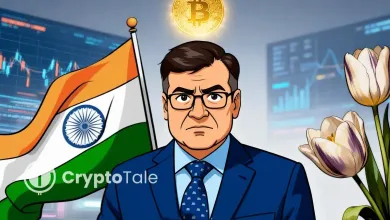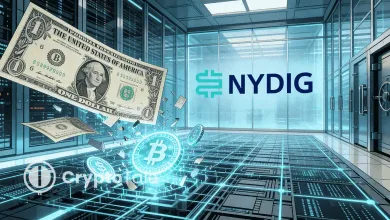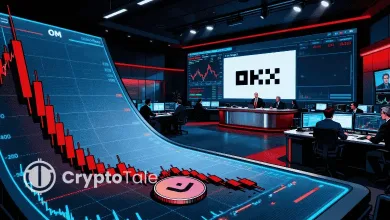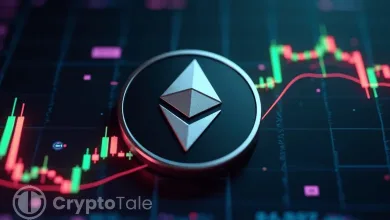Play-to-Earn Gaming 2025: Blockchain Meets Fun and Profit
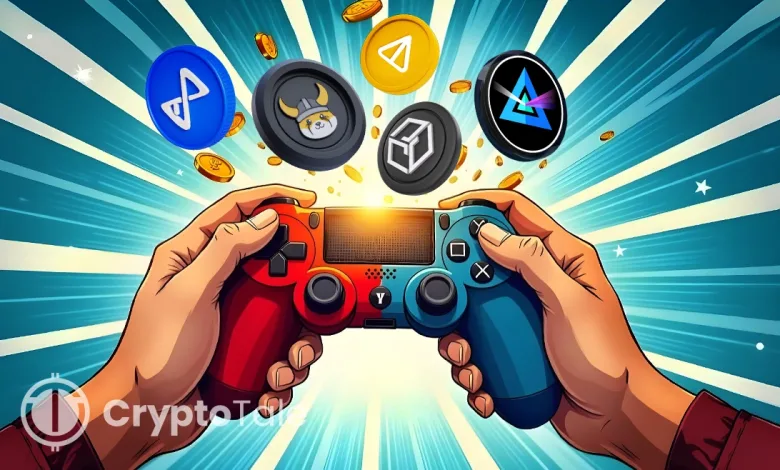
The concept of play-to-earn (P2E) has revolutionized the gaming industry. Giving players opportunities to win real money while playing games has changed the way people perceive time spent in gaming. These ecosystems are backed by blockchain, which lets players get tokens, which can be exchanged, sold, or put back into the game. To some, this innovation makes gaming a source of income; to others, it makes it even more interesting.
P2E gaming is not a single entity and can be divided into several categories. Some of the most popular tokens and platforms define it, each of which boasts its own characteristics and advantages. These tokens form the core of the P2E ecosystem and thus link the players, developers, and investors. Now, let’s take a look at the top tokens that define P2E and what they tell about the future of the industry.
Floki (FLOKI)
Floki, named after Elon Musk’s Shiba Inu dog, is a perfect example of a decentralized community-driven project. Floki was created by the Shiba Inu community and has since become a powerful ecosystem that combines gaming and DeFi. It is a digital token that is used within this versatile and innovative ecosystem.
Valhalla is a gaming metaverse owned by Floki that integrates the use of blockchain in gameplay. Tokens are acquired as rewards for achievements within the game and for trading non-fungible tokens. Apart from this, Floki has also provided a DeFi solution known as FlokiFi, which contains Staking and Liquidity Pools. Floki Vikings, a very supportive community, supports and fuels its development.
The market capitalization of Floki is $1.60 billion, and the circulating supply is 9.6 trillion tokens. As of press time, it is valued at $0.0001668 and spiked to $0.0003462 in June 2024, which is the token’s all-time high. Floki has social support, exciting features, and collaborations, making it a major force in the play-to-earn industry.
Beam (BEAM)
Beam is designed to facilitate developers and advocate for coordination within the P2E ecosystem. It develops a blockchain platform for developers to create, test, and deploy blockchain games. Beam also has an SDK (Software Development Kit) that is seen as a very valuable addition to the platform because it makes it simple to integrate blockchain into many different applications.
Beam also differs from most blockchain projects in terms of governance. By using the BEAM token, the holders of the token have a say in decisions made and help determine the direction the platform will take through its DAO. The token acts as a means of participating in asset transfers, smart-contract execution, and other operations within the ecosystem, which proves the token’s importance for the Beam network.
With a market capitalization of $1.14 billion and a total circulating supply of 62.43 billion tokens, the current price of Beam is $0.02316. Although it reached an all-time high of $0.04434 in March 2024, the project’s true asset is its active developer base. The BEAM tokens are rewarded to the players for their engagement in governance, trading of assets, and contribution to the game’s growth.
Gala (GALA)
Gala goes beyond simple gaming by connecting the two major entertainment industries. A paradigm shift has positioned Gala on GalaChain, where it carries out its gaming, music, and film projects. This multi-industry approach is an effective way to expand the target audience and become a key player in the blockchain market.
Gala’s Node System is another important feature. Node operation allows users to gain rewards and help support the network’s decentralization. On the other hand, developers use the GalaChain SDK to create Web3 applications for the deployment of decentralized applications. This is because Gala is designed to work in tandem with other industries, with the aim of providing value for gamers, content creators, and investors.
Gala has a market capitalization of $1.32 billion with a total circulating supply of 38.75 billion tokens. As of press time, GALA is trading at $0.03519 per token, it might seem cheap compared to its highest value of $0.8367 in November 2021, and therein lies its uniqueness as it has the potential to revolutionize more than one industry. This makes GALA a flexible and promising token since players can accumulate it from node operations, engaging in games, and participating in the community.
Axie Infinity (AXS)
Axie Infinity is arguably the leading game in the Play-to-Earn model. It quickly helped popularize blockchain gaming and proved that anyone could generate income through play-to-earn games. The players are able to gather, nurture, and fight with digital characters named Axies and get the rewards.
The key gameplay element of Axie Infinity is the 3v3 battle system, which has elements of strategy. The game is further enhanced by over 500 body parts players can use to customize Axies. Axies can be bred to produce new and extraordinary characters that can be sold or used in battles.
Its price has plunged from its peak of $164.90 in November 2021 to the current price of $6.28. Its market capitalization of $988.65 million and the circulation supply of 270 million tokens show that it is still active. Battling, breeding, and selling Axies still allows players to earn AXS, so it remains a key component of the P2E system.
Notcoin (NOT)
Notcoin is easier to use than other P2E gaming platforms. It started as a community-based project associated with a viral Telegram game and has since grown into a Web3 ecosystem. Because of this, it is a preferred choice for new users who are getting into blockchain gaming.
A key aspect of Notcoin is the tap-to-earn mechanism, which makes interaction with the Web3 world simple and clear. The token is also used for traditional transactional purposes and for participation across the platform. Notcoin remains an active and expanding community that continues to adapt to new developments and gain loyal users.
Notcoin has a total market capitalization of $674.06 million and a total circulating supply of 102.45 billion tokens. As of press time, NOT is at $0.00658. It could possibly climb up to an all-time high of $0.02896 in June 2024. Even grassroots projects are possible in the P2E field, where players can receive NOT tokens for various activities and interactions in the game and ecosystem.
The State of P2E Gaming: Growth or Stagnation?
However, these tokens represent a value within P2E gaming, and the industry has problems. The key challenges that hamper the process are the regulatory environment, competition, and high volatility of tokens. The first success of the P2E model can be referred to as Axie Infinity, but it also highlighted the dangers of the model. The downside is that players have to spend a lot of money to get started, and when the value of tokens drops, so does the income.
At the same time, Floki, Beam, Gala, and Notcoin are excellent examples of the industry’s flexibility. These tokens work with the latest technology, develop essential environments, and form powerful communities. Their success indicates that P2E gaming is not stagnant; it is growing to meet new market opportunities.
Conclusion
The success or failure of P2E gaming in the coming years will be the defining factor of the future of interactive entertainment. It is, therefore, important for the players, investors, and developers of this market to understand its dynamics. Whether this model will remain successful or undergo a downfall, the impact of P2E gaming on the industry cannot be denied. Its future will determine its place in the gaming industry.

